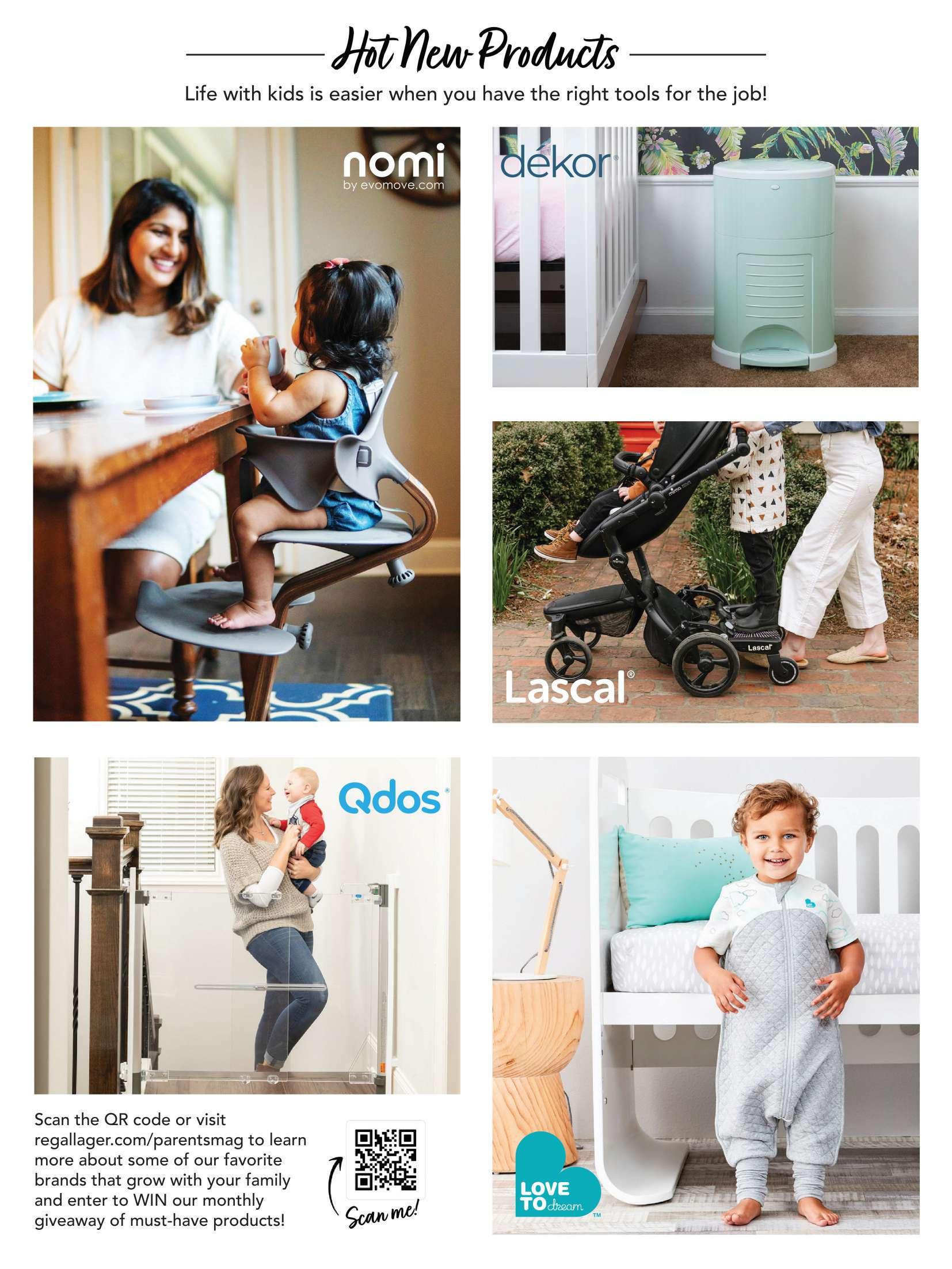
4 minute read
3–4 Years
of their brain that are responsible for storing and retrieving memories, and forms new connections between nerve cells. The more neural connections there are, the more ways your baby can process information (which makes them smarter). Help establish those pathways by caressing your child’s tummy with a feather or showing them how to squeeze a bath toy. And let them master some tasks on their own, such as trying to keep blocks from tumbling.
Rely on repetition.
Advertisement
Infants form stronger memories when they have repeated exposure. That’s why it’s helpful to sing the same songs or play your baby’s favorite game every day before their nap. Sticking to routines, but sometimes varying them in some way (like saying “peekaroo” instead of “peekaboo”), strengthens the preexisting connections in your baby’s brain while forming new ones.
Talk all the time.
Kids whose parents frequently talk to them usually have a bigger vocabulary and start speaking sooner because they recall many of the words they have heard. When your baby starts to babble, join in. Smile, make eye contact, repeat their sounds, and then pause to let them respond. This back-and-forth teaches your baby how to take turns during a conversation and lets them hear, remember, and repeat a few sounds at a time. Reading books together also gives them a context for new words. For instance, a story about a cow may use words like cow and spots repeatedly and in various ways. The pictures will help reinforce your baby’s memory for those words.
Have fun with lyrics.
The rhythm, rhymes, and pattern of a song make it easy for babies to recall. In “Itsy-Bitsy Spider,” for example, the melody and rhyming words help your baby predict what will come next. They’ll catch on quickly to wiggle their fingers like a spider. To encourage memory retention, sing short, upbeat songs like “Head, Shoulders, Knees, and Toes,” and point to each body part. You can make up your own songs too. Hold up a photo of your baby’s grandparents while singing, “This is Grandma; this is Grandpa. They love you,” to the “Where Is Thumbkin?” melody. This can also help your babe learn their grandparents’ faces. And remember to smile. Your child is more likely to recollect something if it’s linked to a positive emotion. So whether you’re showing them how to make a toy light up or talking about the bird outside, use lots of cheery facial and vocal expressions.
Sources: Sherry Artemenko, a speech-language pathologist and founder of Play on Words; Stephen Christman, Ph.D., professor of psychology at the University of Toledo; Ross Flom, Ph.D., assistant professor of psychology at Southern Utah University, in Cedar City; Lisa Oakes, Ph.D., professor of psychology at the Center for Mind and Brain at the University of California, Davis.
1 – 2 Y E A R S
H O W T O
Prepare for a Plane Ride
by R E B E C C A R A K O W I T Z
Know what to pack.
If you’ll be f lying with your toddler, bring whatever you think will keep them comfortable. Anything that makes them feel safe at home, like a favorite lovey or blanket, can help do the same in this new environment. Mix things up a little and throw a few surprises into your carry-on bag to give to your child before boarding or during takeoff. The excitement of a new toy or coloring
book, for example, can help hold their attention longer and perhaps ease their discomfort. It’s also a good idea to download any favorite shows ahead of time. Dressing in layers is key, since airports and planes are often chilly. Bring backup clothes and diaper-changing must-haves in case there’s a blowout. When planning snacks, bring things that don’t require refrigeration or count as liquid when passing through TSA. Try easy-to-eat foods that you know your kid will enjoy, like Goldfish, animal crackers, Cheerios, or cut fruits and veggies.
Ease inner ear issues.
The “airplane ear” that you may notice yourself can be magnified for your kid. During takeoff and landing, the pressure in the plane cabin changes, and the eustachian tubes in the inner ear may be slow to balance that pressure. This is especially true for a 1- or 2-year-old, whose tubes are smaller and straighter than adult tubes, making it harder for them to drain properly. This pressure sensation can hurt or scare your child, so they may be fussy at the beginning and end of a f light. To try to minimize the discomfort, give your kid something to eat or drink. Moving their jaw and swallowing will help keep their tubes open. For any acute concerns or if your child has an active ear infection, it’s best to check in with a doctor prior to f lying.
Understand their reaction.
Your child can experience a lot of big feelings in this strange new environment. Flying can be loud and unsettling, and can cause motion sickness. Additionally, being stuck in their seat can also make them restless. Although it’s safest for them to stay strapped in, if they are feeling particularly antsy, the seat belt sign is off, and the f light attendants aren’t in the middle of a service, you and your child can carefully walk up and down the aisle. It’s also okay for them to move around in their seat or in your row. Just remember to keep the personal space of other passengers in mind. Your kid may also act out if they are just plain tired. Flights can interrupt nap schedules, and even if you align your travel with naptime, your little one might have











